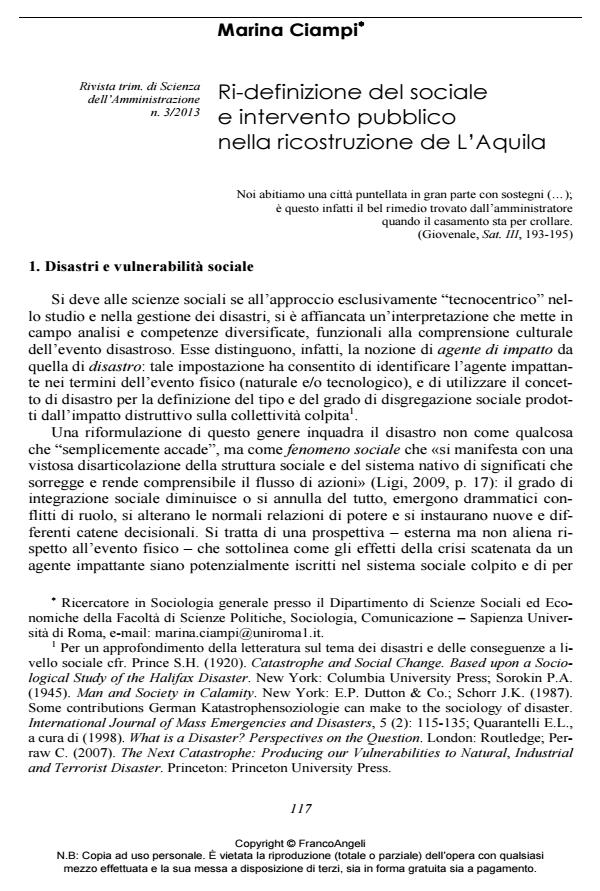Re-definition of the social and public intervention in the reconstruction of L’Aquila
Journal title RIVISTA TRIMESTRALE DI SCIENZA DELL’AMMINISTRAZIONE
Author/s Marina Ciampi
Publishing Year 2013 Issue 2013/3
Language Italian Pages 12 P. 117-128 File size 426 KB
DOI 10.3280/SA2013-003008
DOI is like a bar code for intellectual property: to have more infomation
click here
Below, you can see the article first page
If you want to buy this article in PDF format, you can do it, following the instructions to buy download credits

FrancoAngeli is member of Publishers International Linking Association, Inc (PILA), a not-for-profit association which run the CrossRef service enabling links to and from online scholarly content.
Social sciences usually analyze the social consequences of natural disasters. Such consequences, in fact, may entail the disintegration of the social structure and the collapse of the in-depth reasons that guide collective action. For instance, the 2009 earthquake that struck L’Aquila caused a deep rupture in the in the social fabric of the area causing the issue around the reconstruction of the city to be reduced to a merely bureaucratic matter. The community set up new practices of interaction, communication and the uses of spaces; however, trust in the local and national institutions has been undermined mainly because of the discontinuity with governance and the lack of coordination between the different levels of the public administration. The challenge is therefore to identify and manage the structural dynamics according to a clear-cut strategy involving all the actors and going beyond local interest. In this way it will probably be possible to overcome the political and institutional that up not now have undermined the credibility of public authorities.
Keywords: Socio-territorial reconstruction, institutions-individuals, trust
Marina Ciampi, Ri-definizione del sociale e intervento pubblico nella ricostruzione de L’Aquila in "RIVISTA TRIMESTRALE DI SCIENZA DELL’AMMINISTRAZIONE" 3/2013, pp 117-128, DOI: 10.3280/SA2013-003008